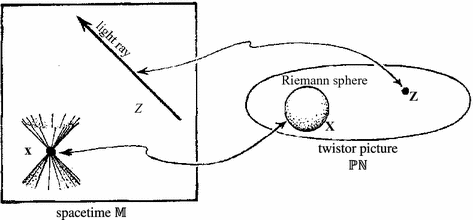There’s a remarkable article by Mike Duff in this month’s CERN Courier, arguing the case that string theory does too have important applications: in Quantum Information Theory. The claim seems to be that since the same algebraic structures appear in black-hole entropy calculations in string theory and in the analysis of certain cases of the entanglement of qubits, this provides an application of string theory to Quantum Information theory. There’s some remarkably obscure algebra involved, from exceptional structures such as E7, the octonions and the Fano plane to Cayley’s nineteenth century work on hyperdeterminants. Besides the very complicated mathematics and physics, what I don’t understand about this is the claim that if the same classical algebraic structure gets used to do a calculation in string theory and in subject A, it means that string theory is being applied to subject A.
While the mathematical physics story Duff tells may be of some interest (to learn more about it, there are review articles here and here), unfortunately he can’t resist the temptation to shanghai it into service in the string wars. He gives a less-than-honest description of the problem with string theory:
The partial nature of our understanding of string/M-theory has so far prevented any kind of smoking-gun experimental test.
The problem with string/M-theory is not that it is missing a “smoking-gun experimental test”, it is that it is missing any kind of experimental test whatsoever, which is rather different. He defends the failure of string theorists to come up with any experimental test after more than 25 years of work by thousands of physicists writing tens of thousands of papers with a comparison of the situation to that of the time lag between the 1935 Einstein-Podolsky-Rosen paper and J.S. Bell’s work 29 years later. One obvious difference is that, before Bell, hardly anyone tried to come up with such a proposal, unlike the case of string theory, where the issue has been the central one in the field since 1984.
Under the heading “Further Reading”, one is referred to Duff’s 2007 debate with Smolin, which I posted about here, based on second-hand reports from those in attendance. Until now I don’t think I’d seen the transcript of the debate, which is available here. I notice that Duff sums up his argument as follows:
The trouble with physics ladies and gentleman is that Lee Smolin and Peter Woit having lost their case in the court of science, are now trying desperately to win it in the court of public opinion. Thank you.
It seems to me that Duff, having lost his case in the court of his physicist peers, where string theory unification is widely seen as a failure and young string theorists are just about unemployable, is now trying desperately to win it with tendentious argumentation in the court of popular opinion (well, at least in the pages of the CERN Courier…).
Update: Lubos seems to mostly agree with me about this:
So the role of the qubits, or the arguments of the hyperdeterminants, are “physically” completely different.
…
A superficial similarity of one aspect is very far from a full-fledged mathematical equivalence.
Update: John Baez’s latest TWF has an explanation of some of the mathematics involved here.


